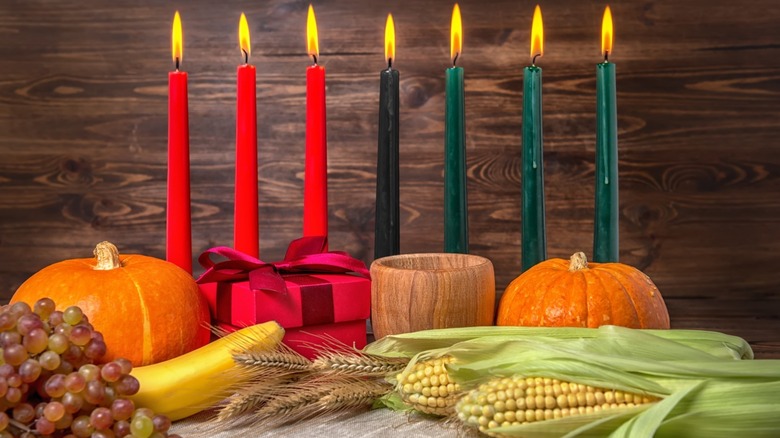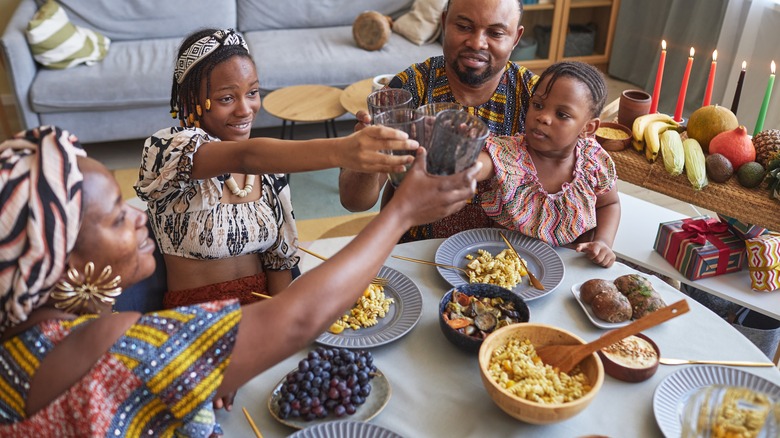Properly Setting The Table During Kwanzaa, Explained
The holiday of Kwanzaa is celebrated each year from December 26 to January 1. It's mostly observed by African Americans, as well as people with African heritage living in other countries, according to Britannica. It's also a young holiday, founded in 1966 by Maulana Karenga, an Africana studies professor at California State University. Karenga decided on the name based on a phrase in Swahili — matunda ya kwanza, meaning "first fruits," per History — and added the last "a" to make the word seven letters in honor of the seven children who attended the very first Kwanzaa.
Contrary to popular belief, Kwanzaa is not actually a religious or political holiday but rather a celebration of African culture, community, and family, and it can be celebrated by all faiths. The holiday also commemorates South African food and the first harvests made by African people. Each day of the seven-day holiday focuses on one of seven key principles: unity, self-determination, faith, creativity, collective responsibility, purpose, and cooperative economics, explains the University of Pennsylvania African Studies Center. There are also seven key symbols displayed on the table during the holiday, of which anyone who's getting ready to host a Kwanzaa meal should take note.
Meaningful objects should be displayed on the table
Setting the table during Kwanzaa is an important tradition that many African descendants who celebrate the holiday follow. According to Britannica, the seven symbols of Kwanzaa that appear on the table are ears of corn; gifts; a straw mat; a cup that symbolizes unity; a candleholder; vegetables, fruits, and nuts; and seven candles that represent the holiday's seven key principles. Three candles are green, three are red, and one is black; the black candle stands for African people, the red candle stands for the struggles they have endured, and the green candle stands for the future and land (via History).
The vegetables, fruits, and nuts commemorate the crops and harvest of early African people and could include squash, bananas, sweet potatoes, okra, and yams on the table. Per Food Network, the ears of corn symbolize the children in the family who still live at home. As far as the served food goes, there isn't an exact menu, as it's really up to each individual. Commonly prepared foods are curry dishes from West India and South Africa, groundnut stew from Ghana, jollof rice from Nigeria, jambalaya, pepper pot stew from Philadelphia, fish and rice from Senegal, and more. These days, many celebrations may feature catfish, gumbo, collard greens, and jerk chicken.

